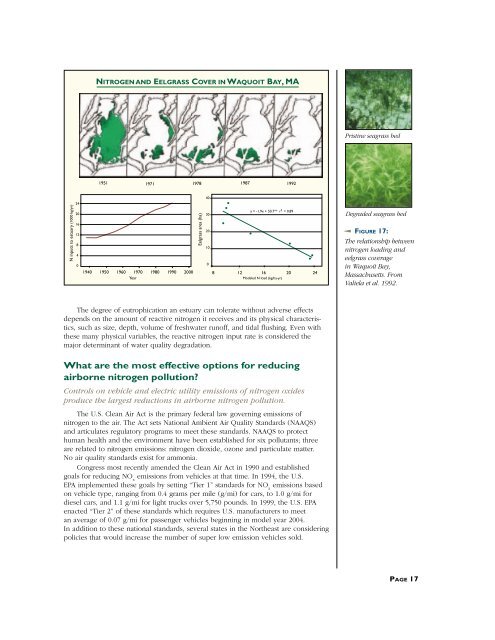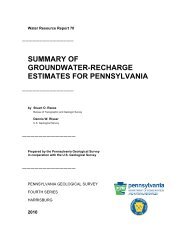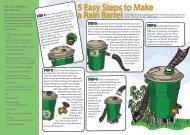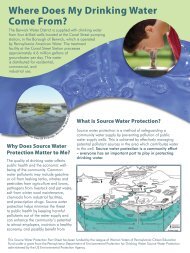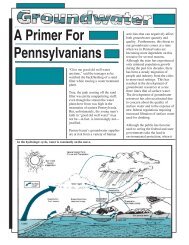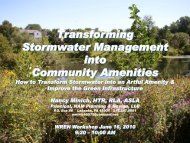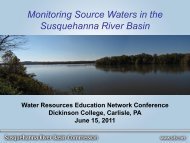NITROGEN POLLUTION: - Hubbard Brook Research Foundation
NITROGEN POLLUTION: - Hubbard Brook Research Foundation
NITROGEN POLLUTION: - Hubbard Brook Research Foundation
You also want an ePaper? Increase the reach of your titles
YUMPU automatically turns print PDFs into web optimized ePapers that Google loves.
<strong>NITROGEN</strong> AND EELGRASS COVER IN WAQUOIT BAY, MA<br />
Pristine seagrass bed<br />
1951 1971 1978 1987 1992<br />
24<br />
20<br />
16<br />
12<br />
8<br />
4<br />
0<br />
40<br />
30<br />
20<br />
10<br />
0<br />
1940 1950 1960 1970 1980 1990 2000 8 12 16 20 24<br />
Degraded seagrass bed<br />
FIGURE 17:<br />
The relationship between<br />
nitrogen loading and<br />
eelgrass coverage<br />
in Waquoit Bay,<br />
Massachusetts. From<br />
Valiela et al. 1992.<br />
k<br />
The degree of eutrophication an estuary can tolerate without adverse effects<br />
depends on the amount of reactive nitrogen it receives and its physical characteristics,<br />
such as size, depth, volume of freshwater runoff, and tidal flushing. Even with<br />
these many physical variables, the reactive nitrogen input rate is considered the<br />
major determinant of water quality degradation.<br />
What are the most effective options for reducing<br />
airborne nitrogen pollution<br />
Controls on vehicle and electric utility emissions of nitrogen oxides<br />
produce the largest reductions in airborne nitrogen pollution.<br />
The U.S. Clean Air Act is the primary federal law governing emissions of<br />
nitrogen to the air. The Act sets National Ambient Air Quality Standards (NAAQS)<br />
and articulates regulatory programs to meet these standards. NAAQS to protect<br />
human health and the environment have been established for six pollutants; three<br />
are related to nitrogen emissions: nitrogen dioxide, ozone and particulate matter.<br />
No air quality standards exist for ammonia.<br />
Congress most recently amended the Clean Air Act in 1990 and established<br />
goals for reducing NO x<br />
emissions from vehicles at that time. In 1994, the U.S.<br />
EPA implemented these goals by setting “Tier 1” standards for NO x<br />
emissions based<br />
on vehicle type, ranging from 0.4 grams per mile (g/mi) for cars, to 1.0 g/mi for<br />
diesel cars, and 1.1 g/mi for light trucks over 5,750 pounds. In 1999, the U.S. EPA<br />
enacted “Tier 2” of these standards which requires U.S. manufacturers to meet<br />
an average of 0.07 g/mi for passenger vehicles beginning in model year 2004.<br />
In addition to these national standards, several states in the Northeast are considering<br />
policies that would increase the number of super low emission vehicles sold.<br />
PAGE 17


